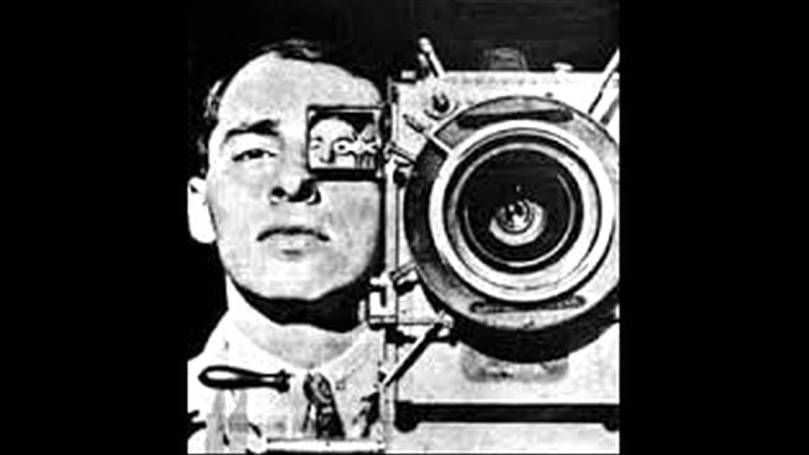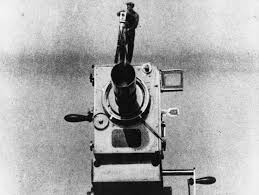Erik Barnouw asks the reader in his book Documentary: A History of the Non-Fiction Film to consider the visibility of the camera in Vertov’s Man with a Movie Camera. What makes this film so interesting and unique is its draws direct attention the fact that it is a film, when often the goal is to make the audience forget. Where most films try to hide the camera, this film intentionally displays it. I believe the reasoning behind this it to draw comparisons between filmmaking and everyday life, as well as to experiment with the blurred line between reality and illusion.
The film is very obvious in its attempt to draw comparisons. We can see this when Vertov cuts the images of a woman washing herself with a window washer. The film also makes a point to compare the camera with the human eye. We are shown shots of a woman’s eye looking directly at the camera. Immediately after that, we are shown images that lead the audience to believe that was what the woman was looking at. Then we are shown the lens of the camera, which is followed by similar shots to what the woman was looking at, drawing a direct comparison between the lens and the human eye. This metaphor is further enforced as we see the aperture change in the camera lens much the same way the pupil would dilate and shrink. The change in size of the aperture hole and pupil serve the same purpose, regulating the amount of light that gets let into the camera/eye. This is one way Vertov compares human observation to camera documentation of everyday life.
Vertov likes to play with the line between reality and illusion. We are shown many scenes of real, everyday life, from the shops opening up, to the busy streets. However, these pieces of realism are at times interrupted by optical illusions performed within the camera. The cameraman and his device are made to look incredibly small in a scene at the beginning of the film. Towards the end of the film, the cameraman and his device are made to look incredibly large as they film the busy streets. This may be included to comment on the power the medium of film has to skew reality. Another illusion we are shown is the stop motion movement of the camera and tripod. Barnouw contemplates the meaning of this scene. “is Vertov telling us again about the superhuman abilities of the camera- or is this just playfulness” (Barnouw 63). I think that it is both a comment on the abilities of the camera and a bit of playfulness. The best part of experimenting with new technologies is the ability to be playful with them. The smartphone has an incredible amount of power, to send images across the world in a matter of seconds, but we still use that feature to send cat photos.
Vertov even shows an example of illusion in reality, without the help of the camera. The audience is shown the faces of amazed children as they watch a magician make objects seemingly disappear. All these examples of illusion flow right into the thesis that film is an illusion. Vertov shows us how a photo, a single frame, can start to move as if it were reality. I can’t imagine how exciting it would have been to be able to construct and deconstruct reality for the first time, when this technology was new. It reminded me a lot of Georges Méliès’ work and how mind blowing it must have been for audiences who have never experienced something like that before. It’s this kind of experimentation with film that would drive special effects for years to come.
It is really easy to consider Man with a Movie Camera to be a hodgepodge of scenes without much of a theme to glue it all together. Some may believe this because of it’s lack of a definite narrative. However, by looking at the film from a technical lens, we may better understand the intention behind filming scenes of daily life. The film has many themes, both technological and sociological. As filmmakers studying the origins of documentary film, this was an incredibly interesting look into the history of the genre. It’s different from Nanook of the North in that it does not seek out a clear narrative. It is similar because both films staged events to look like real scenes. However, I am more inclined to appreciate Man with a Movie Camera in regards to the staged scenes because this film looked to be more self referencing rather than looking to trick the audience.
I may be more biased to love Man with a Movie Camera and the messages it sends because I am a filmmaker. I found the comparisons between filmmaking and daily life endlessly endearing and the experimentation of illusion fascinating. Film is, after all, the art of lying. So for Vertrov to point that art at reality and see what would happen is near revolutionary.




